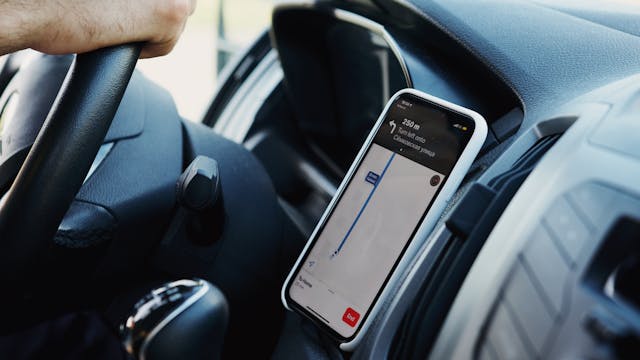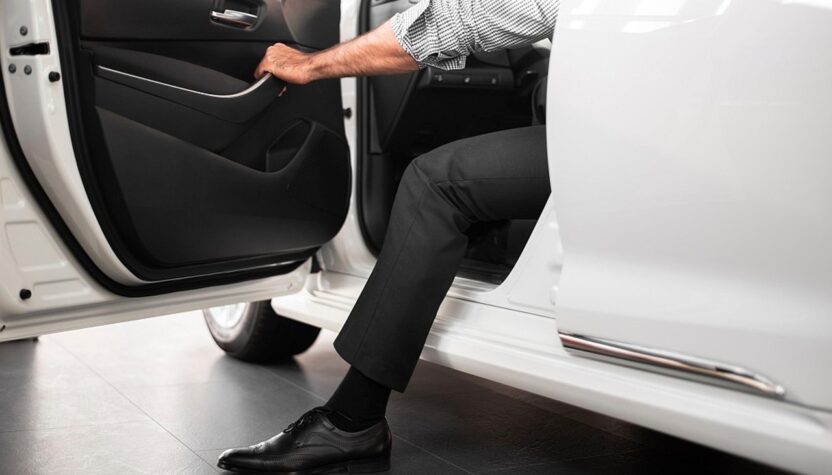Imagine stepping out of your home and summoning a ride with just a tap on your smartphone. In today’s fast-paced urban landscape, this convenience has become the norm rather than the exception. Ride-hailing services have transformed how we navigate our cities, offering more than just a quick lift from point A to point B. As urban centers grow and traffic congestion becomes an everyday challenge, the need for efficient transportation solutions has never been greater.
Ride-hailing isn’t just about getting where you need to go; it represents a shift in how we think about mobility itself. With technology at its core, these platforms are redefining convenience while addressing pressing issues like traffic jams and environmental concerns. Dive into the key benefits of ride-hailing and discover why it is poised to shape the future of urban transportation!
Convenience and On-Demand Access
Convenience is at the heart of ride-hailing services. Gone are the days of waiting for a bus or searching for a taxi. With just a few taps on your phone, your ride arrives within minutes. This on-demand access means you can travel whenever life calls. Whether it’s an early-morning meeting or a late-night outing, getting from one place to another has never been simpler. Ride-hailing apps provide real-time tracking, showing exactly when your driver will arrive. You won’t have to stand outside in the cold or rain anymore; you’ll know precisely when to step out. The ability to easily split fares with friends adds another layer of convenience. Sharing rides saves money and enhances social experiences by keeping everyone together throughout the journey.
Reduced Traffic Congestion
Ride-hailing services have the potential to reduce traffic congestion in urban areas significantly. These platforms encourage carpooling and ridesharing by offering a flexible alternative to personal vehicles. This maximizes vehicle occupancy and minimizes the number of cars on the roads. Moreover, ride-hailing apps utilize advanced algorithms to optimize routes. This means fewer drivers circling looking for parking or navigating through busy streets. As a result, travel times decrease, benefiting both users and public transport systems. The impact is especially noticeable during peak hours when traditional commuting methods often falter under pressure. With more people opting for rideshare options instead of driving alone, cities can experience smoother traffic flow overall. Less congestion translates into cleaner air, and fewer idling engines mean reduced emissions—an essential consideration for urban planning and sustainability efforts in the future.

Cost-Effectiveness for Users
Ride-hailing services have transformed how we think about transportation costs. With the ability to choose from various options, users can find rides that perfectly fit their budgets. Many platforms offer competitive pricing, often lower than traditional taxi services. Surge pricing during peak hours may seem daunting, but discounts and promotions frequently balance things out. This flexibility makes it easier for commuters to save money. Moreover, ridesharing eliminates hidden costs associated with car ownership. No need for parking fees or maintenance expenses; riders only pay for what they use. The convenience of app-based payment systems also enhances affordability. Users can track their spending in real time and manage their transport budget more effectively. For urban dwellers seeking a reliable yet economical way to navigate busy streets, ride-hailing presents an appealing solution that aligns with modern lifestyles.
Technology-Driven Safety Features
Ride-hailing services are transforming urban transportation, particularly with their focus on safety. Advanced technology plays a crucial role in ensuring passenger security. GPS tracking allows users to share their ride details with friends and family. This feature enhances peace of mind during each trip. Knowing someone is aware of your whereabouts can be comforting. Additionally, many platforms have integrated emergency buttons into their apps. With a single tap, riders can alert authorities if they feel unsafe. This direct line helps add an extra layer of protection. Driver background checks are another critical component. These evaluations ensure that only qualified individuals are behind the wheel, creating a trusted environment for passengers. Real-time driver ratings also empower users to make informed choices about whom they travel with. Transparency fosters accountability among drivers while enhancing overall safety in the ride-hailing ecosystem.
Support for Sustainable Transportation
Ride-hailing services are making strides toward greener urban mobility. Many companies are investing in electric vehicles, shrinking transportation’s carbon footprint. By encouraging shared rides, these platforms significantly reduce the number of cars on the road. Fewer cars mean less pollution and improved air quality for city dwellers. Moreover, ride-hailing apps often promote sustainable practices by offering incentives for users to choose eco-friendly options. This shift benefits individual riders and contributes to a larger movement towards sustainability. As cities grapple with climate change challenges, embracing ride-hailing can be a key part of an integrated public transport strategy. It’s about enhancing convenience while prioritizing our planet’s health.
Conclusion
The rise of ride-hailing services marks a transformative moment in urban transportation. As cities grapple with growing populations and increasing congestion, these platforms offer solutions that enhance convenience and accessibility. With the ability to summon a ride at the tap of a button, users experience unmatched ease in their daily commutes. Moreover, as traffic swells, ride-hailing plays a pivotal role in minimizing congestion by promoting shared rides. This helps individuals reach their destinations faster and contributes to greener streets. Another significant advantage is cost-effectiveness. For many users, using ride-hailing services can be cheaper than maintaining personal vehicles or relying solely on public transit options. This affordability allows more people to access reliable transport without breaking the bank. Safety features powered by technology further bolster user confidence when opting for ride-hailing services. Real-time tracking and driver background checks ensure peace of mind during travel. Additionally, these platforms often support sustainable practices through initiatives like electric vehicle adoption or partnerships with local transit systems, aligning with global efforts toward reducing carbon footprints.

